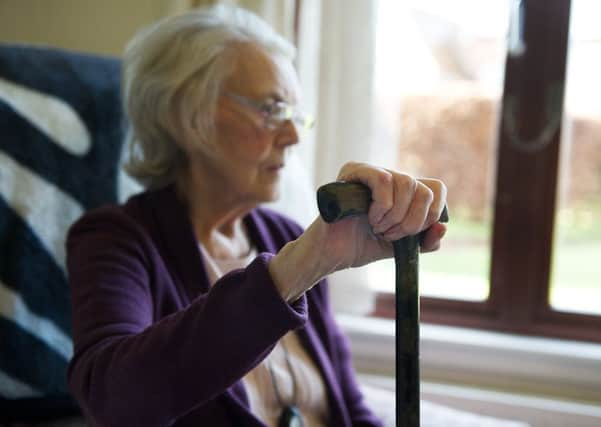Delirium guidelines clear up confusion – Professor Alasdair MacLullich


These words from a patient give a remarkable insight into how traumatic it can be to experience delirium – a dangerous brain disorder that affects at least 15 per cent of all patients in hospitals. The condition mostly affects older people, though not exclusively, and is brought on by illness, medication or surgery.
The main sign of delirium is a state of confusion. People with delirium also sometimes show excessive sleepiness or agitation, hallucinations, or delusions such as believing that they are being imprisoned or poisoned.
Advertisement
Hide AdAdvertisement
Hide AdThere is little awareness of the condition amongst the population. Until recently this has been the same for healthcare settings, where the condition has often gone undetected and care has been absent or inadequate.


New guidelines developed by SIGN (the Scottish Intercollegiate Guideliness Network – part of Healthcare Improvement Scotland) to help clinicians diagnose and treat delirium will further enhance the improvement in care that has been steadily taking place in Scotland over the last few years.
So why is it important to improve the care for people who develop delirium?
For one, delirium is linked to a rapid worsening of a person’s mental abilities. In older people, delirium also increases the likelihood that they will need to go into a care home for the first time. Moreover, there is an increased chance of the individual dying in the following year.
Delirium is also linked with multiple medical complications, including falls – some studies have shown that delirium is implicated in 50 per cent of falls in hospital. There are also financial costs, placing greater strain on our healthcare systems.
The guidelines – the latest in a range of initiatives that have been introduced over the last few years – will make a huge difference in care.
The change in how delirium is identified and treated in Scotland began with the creation of the Scottish Delirium Association (SDA) in 2011. The SDA is a group of healthcare professionals set up to gather and create resources to improve delirium care.
In 2012 the SDA began to work with Healthcare Improvement Scotland, the national organisation supporting better quality health and social care for everyone in Scotland. It has been a very productive partnership. Together they have promoted greater delirium awareness, run multiple teaching sessions, introduced delirium detection tools, and developed a widely-used information leaflet for patients and carers. The positive effects of this work have been seen in increasing rates of delirium recognition across Scotland.
Advertisement
Hide AdAdvertisement
Hide AdHowever, while this partnership approach has certainly made a difference, it was clear that there was still a lot of variation in the quality of care experienced by people across Scotland. That’s where the guidelines stand to make a real difference as they have been developed to be applied across the whole care system.
SIGN, the SDA and a team of interested professionals and lay people have worked together to produce them over the last three years.
I was delighted to be asked to co-chair the development of the guidelines with Ajay Macharouthu, a consultant in psychiatry for the elderly at NHS Ayrshire & Arran. I’ve greatly enjoyed working with the superb committee, and the excellent SIGN team. The rigorous SIGN process for developing guidelines means that we are confident that we have identified and presented the best available evidence to improve diagnosis and care. These guidelines provide an opportunity for us to elevate delirium care in Scotland to the next level, making it a normal part of care that delirium is detected, early treatment is provided, and that patients and families are kept informed of the diagnosis. We are optimistic that, building on the partnership work of the SDA and Healthcare Improvement Scotland, the guidelines will be the foundation for a national effort to care for all patients with delirium to a high standard.
Professor Alasdair MacLullich is professor of geriatric medicine at the University of Edinburgh and was co-chair of the SIGN Guidelines Development Group.